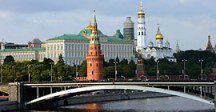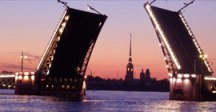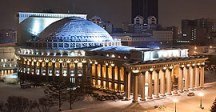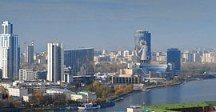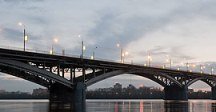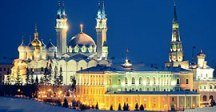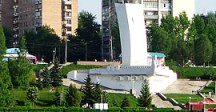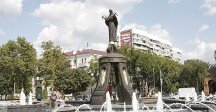Map of Voronezh
Detailed interactive map of Voronezh. Map of Voronezh with streets and numbers of houses. Satellite map of Voronezh with sights of the city.
The change between the satellite map of Voronezh and the schematic one is made in the lower left corner of the interactive map.
Voronezh
The population of Voronezh: 1,050,602 people (2021)
Date of foundation of Voronezh: 1586.
Voronezh city phone code: +7 473
Voronezh automobile area code: 36, 136
The postal code of the city Voronezh: 394000-394095
Voronezh is located in the European region of the Russian Federation, considered the cradle of the navy and airborne troops. It is also known for the fact that it was there that the Tu-144 passenger aircraft and the ID-86 wide-fuselage aircraft were first launched into the world.
The city of Voronezh and its residents showed themselves worthily during the Second World War, so the city was awarded the Order of Lenin and the Order of the Patriotic War. Another merit of his is the title of the city of military glory.
Voronezh is the administrative center of the Voronezh Region, located on both sides of the Voronezh River, 12 kilometers from the place where it flows into the Don.
This is a railway that connects European Russia with the Urals and Siberia, as well as the Caucasus and Ukraine. Voronezh is the center of the M4 motorway: Moscow - Voronezh - Rostov-on-Don. The city is named after the river of the same name, on which it is located.
Voronezh districts
Voronezh has six districts: Kominternovsky, Leninsky, Levoberezhny, Sovetsky, Tsentralny and Zheleznodorozhny.
Transport in Voronezh
Voronezh International Airport is located north of the city. Voronezh also has an airport Attached. Since 1868, there has been a railway connection between Moscow and Voronezh. Trains run from Voronezh to Moscow, Kiev, Kursk, Novorossiysk, Sochi and Tambov.
What to see in Voronezh
Voronezh has many magnificent green places for a relaxing holiday. For example, the City Garden, which was previously used for celebrations and events. Petrovsky Square is also famous for its abundance of greenery and fountains. But the main symbols of Voronezh are the tseykhouse and Peter's Palace with a citadel on the island, which have remained since the Peter the Great era.
Monument to Alexander Pushkin. There is a statue of Russia's favorite poet, Alexander Pushkin, on a small square next to the beautiful Voronezh Opera and Ballet Theater. The monument was opened in 1999 to mark the 200th anniversary of the birth of the great poet.
Monument to Alexey Koltsov. Alexey Koltsov was a famous poet of the 19th century, who was born and died in Voronezh. This monument is the second oldest monument in Voronezh and was opened in 1868 in the so-called Koltsovsky Square (Koltsovsky Gardens).
The main square of Voronezh is Lenin Square, in front of the Voronezh Region Administration building there is a statue of Vladimir Lenin. The monument was erected in 1950 after the original one was destroyed during World War II. Before the revolution, the square was known as Horse Square, as it was used for horse trading.
Monument to Andrey Platonov near Revolution Avenue. Andrey Platonov is a Soviet writer and playwright, born in Voronezh. This monument was unveiled in his hometown in 1999 on the 100th anniversary of his birth.
The Annunciation Cathedral was built in the Russian Renaissance style between 1998 and 2009 and is the third largest cathedral in Russia. The cathedral was built as a replacement for the previous Annunciation Cathedral, which was built between 1718 and 1735.
Monument to Ivan Chernyakhovsky. The area behind Voronezh-1 railway Station is called Chernyakhovsky Square. It is named after Army General Ivan Chernyakhovsky, whose statue stands in the center of the square. Chernyakhovsky commanded a tank division during the defense of Voronezh, and later became the youngest army general during the war and twice a Hero of the Soviet Union.
The Ivan Kramskoy Art Museum on Revolution Avenue was founded in 1933 as a Museum of Fine Arts, which included the art collection of the regional museum. Since 1984, it has been named after the artist Ivan Kramskoy, who was born in the Voronezh province. The museum presents the ancient world (including Egyptian artifacts), Russian art, Western European art, graphics and decorative arts.
The monument to the White Beam Black Ear was unveiled on the square in front of the Voronezh Puppet Theater in 1998. The statue is made of stainless steel, although the dog's ear and one paw are made of bronze.
The monument to Emperor Peter the Great in Voronezh was first opened in 1860 and is considered the oldest monument in the city.
The oldest surviving church in Voronezh is the Assumption Admiralty Church, built in the 16th century. In 1600, the Assumption Monastery was founded by order of Tsar Boris Godunov. This monastery existed until 1700, when Peter the Great began to turn Voronezh into a Russian shipbuilding center.
The Ivan Nikitin House Museum is located in the house that was built by the poet Ivan Nikitin in 1846 and where he spent the last 15 years of his life. The museum tells in detail about Nikitin's life and work, as well as presents his personal belongings and old publications of his works.
Monument to Vladimir Vysotsky on Karl Marx Street. In 2009, a statue of the famous Russian bard Vladimir Vysotsky was unveiled in Voronezh. The monument depicts Vysotsky sitting on a chair with a guitar in his hands.
The Anatoly Durov House Museum is dedicated to Anatoly Leonidovich Durov, the famous Russian clown and animal trainer. Durov moved to Voronezh in 1901, and the museum is located in the house where he lived.
The Church of the Virgin Mary was built between 1770 and 1780 in the Baroque style to replace an earlier version of the church that burned to the ground. In shape, it is a standard "octagon on a cube" with an attached bell tower. Russian writer Ivan Bunin, who was born in Voronezh, was baptized here.
Monument to Ivan Bunin. Russian writer, poet and Nobel Prize winner Ivan Bunin was born in Voronezh in 1870. The monument was opened in 1995 to mark the 125th anniversary of his birth. The area around the monument was turned into Buninsky Square.
The Literary Museum of the Voronezh Region, named after Ivan Nikitin, is located in a building that was once the City Council building, which dates back to the end of the 18th century and was the first three-storey building in Voronezh. Inside the museum there are three permanent exhibitions dedicated to the poet Alexei Koltsov and the authors Ivan Bunin and Andrei Platonov - all of them were born in Voronezh.
The Voronezh Regional Museum was established in 1894 in three halls of the City Duma. The main exposition of the museum is devoted to the history of Voronezh lands, archaeological finds and the history of shipbuilding of the city.
The Monument of Glory is part of a memorial complex, including a mass grave of soldiers of the Red Army who died in Voronezh during World War II. The monument was opened in 1967 and is a statue of a fallen soldier in front of a massive pedestal. Right in front of the monument there is a red pyramidal structure in honor of awarding Voronezh the title of the City of Military Glory.
A ruined Rotunda on a Transport street. One of the most memorable monuments of Voronezh is the ruined rotunda. The rotunda was originally part of the Regional Hospital, which was blown up during World War II. After the war, it was decided to leave the ruins as they are to serve as a poignant reminder of the devastation that the war brought to the city, where more than 92 percent of the entire housing stock was destroyed.
Voronezh sights
Rotunda, Bristol, Voronezh Palace, Kitten from Lizyukova Street, Patriots Park, Monument to the White Beam, Scarlet Sails, Petrovsky Square, Annunciation Cathedral, Monument to V.S. Vysotsky.
The largest cities in Russia:
2024 © Russia-Karta.ru
